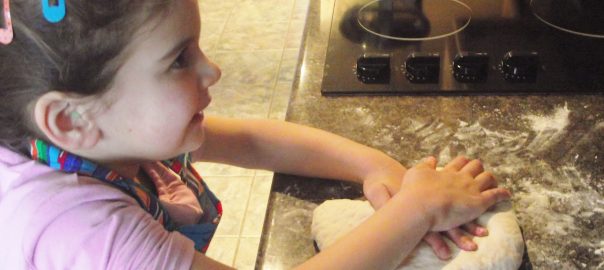Picnics in the park, games of rounders with neighbourhood kids, watching TV and sneaking ice pops out of the freezer. What memories do the summer holidays conjure up for you? For many, the long break from school offered up a welcome chunk of liberty, enjoyed alongside copious amounts of strawberries and ice-cream.
From a parent’s perspective, however, the enjoyment of spending time with their children can be diminished by the challenge of juggling work and other commitments, while worrying about the impact of soaring childcare costs.
In Britain, the long summer break is a throwback to the time when children were needed to pick fruit and work on farms. With its purpose made redundant long ago, the question remains as to whether the traditional six-week summer holiday actually fits in with modern life. Should the summer break be slashed to four weeks? It is a question that divides opinion and raises many issues including those of:
Affordability
If you struggle with the cost of the summer holidays, you’re not alone. For those lucky enough to go away, the high costs of peak-time travel can really bite. Even if you stay at home, the expense of entertaining the children and the prohibitive cost of childcare, place a real strain on family finances. Working mum Asha Lewis says, ‘I’m lucky I have amazing friends and family to help, but if I had to pay for childcare over the entire summer I’d hardly be left with anything. It’s a real nightmare for some.’
Jo McGowan of Guildford Business Training says, as a small business owner, she finds the summer holidays manageable but it’s the early September INSET days that present a problem. ‘After six weeks of trying to sort out childcare and activities, the INSET days at the beginning of term are a real headache. Many holiday clubs have finished by then.’
However, a recent report by the Trussell Trust has added a more worrying concern. While 40% of parents worry about extra summer costs such as childcare and activities, 1 in 5 parents will skip a meal over the summer in order to be able to feed their kids. In July and August 2016, the charity issued 67500 emergency food packages to families. This figure is significantly higher than usual and is set to rise again this year.
Another charity, Action for Children, has reported unprecedented demand for its Holiday Kitchen places in some areas of the UK. The phenomenon of children going hungry during the long school break is, in one of the world’s richest countries, extremely worrying. Reducing the length of the summer holidays may alleviate the problem but does not, by any stretch of the imagination, solve it.

The summer learning gap
It’s inevitable that over a six week break from school, children will forget much of what they’ve learned. According to research carried out in the US, academic progress halts significantly during the summer. One study found that pupils returning to school in September are, on average, one month behind where they left off at the end of the summer term. Teachers, therefore, must waste time re-teaching lessons, in order to bring pupils back up to speed after the summer slide.
In 2008, a report by the Institute of Public Policy Research (IPPR) recommended the school year be rearranged to five terms of eight weeks, with a four week summer holiday and two week breaks between the remaining terms. The IPPR’s findings that maths and reading skills regress over the summer mirrors the results of research carried out in the US. According to the IPPR report, children from disadvantaged backgrounds are hardest hit, because they may not be able to access the same activities and clubs as their peers.
Burn out
Children in the UK start school relatively early compared with many of their European counterparts and are under more pressure than ever to achieve. A complete restructure of the school year, with shorter, more frequent breaks may benefit children more than the current set-up.
Disbanding the summer holidays and distributing them evenly throughout the year, could help children achieve and progress. Teacher Sally Hebden says, ‘Children lose momentum and motivation over the summer. The autumn term is too long and tiring for them. I think they would benefit academically and emotionally from shorter, more regular breaks.’
Teachers’ needs
Teachers often finish the year exhausted, stressed and burnt out. Many argue they not only need the summer holidays to recover, but also to prepare for the coming school year. Teacher Gil Wilson thinks the summer holidays should be left as they are. ‘Both the kids and teachers need it. Teachers spend at least three weeks of the holidays planning for the year ahead as well as sorting out their classrooms. Four weeks just wouldn’t be long enough.’
Disappointed Children
Some parents, like fitness instructor Sarah Feazey, think depriving children of the long summer holidays would be, quite simply, mean. ‘Most people have lovely memories of the summer holidays and it wouldn’t be right to prevent others from having what we had. Also, children need to have as much fun as possible without formal structure.’
A six week school break also provides parents and children with a real opportunity to spend quality time together. Stay-at-home mum Helena Borely says, ‘I enjoy the summer hols and I like having that chunk of time with the kids while they still want to spend it with me!’ The long break from the school run, homework and the whirlwind of after school activities is welcomed by many parents.
Long summer holiday periods are the norm throughout the world. Children in the USA enjoy a twelve week pause, while other countries, such as France and Sweden, opt for a nine or ten week break. Although the reason behind long summer holidays is a relic from the past, it appears to still work for many other countries.
Incidentally, schools are at liberty to set their own term dates. While they have the opportunity to shorten the summer holidays, most choose not to. Whatever your take on the debate, it seems children will continue to enjoy the magic of an extended summer for the foreseeable future.
Aimee Foster is a mum, freelance writer and social media manager, stationery addict and sea lover. Find more of her ramblings over on her blog, New Forest Mum.










 A former career civil servant, Jodie took a break from Whitehall when her eldest daughter Lily was born just over 4 years ago. Since then, she’s had another baby – Oliver – and moved to the sticks. As a stay at home mum, her day to day life is very much dictated by the school run, toddler groups, clubs, feeding and the bed and bath routine.
A former career civil servant, Jodie took a break from Whitehall when her eldest daughter Lily was born just over 4 years ago. Since then, she’s had another baby – Oliver – and moved to the sticks. As a stay at home mum, her day to day life is very much dictated by the school run, toddler groups, clubs, feeding and the bed and bath routine.
